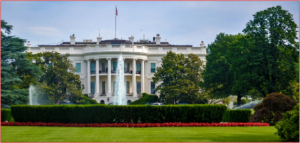President Biden will sign an Executive Order that sets an aggressive new target to make half of all new vehicles sold in 2030 zero-emissions vehicles, including battery electric, plug-in hybrid electric, or fuel cell electric vehicles, the White House said this morning. The Executive Order also starts the development of long-term fuel efficiency and emissions standards to save consumers money, cut pollution, boost public health, advance environmental justice, and tackle the climate crisis.
The weak points in the plan is allowing for hybrids, and worse plug-in hybrids, which have laughable range running as an EV. However this is a politically needed SOP for most automakers that have been slow to embrace pure EVS. This is industrial policy on a grand scale that proponents argue is needed to survive in the global economy. Less than 4% new vehicles sold in the U.S. during June were electric or plug-in hybrids. This puts the Republicans in a tough spot. Helping Big Business – in effect tax cuts for the rich – is their highly selective policy. But creating middle class jobs while acknowledging Global Warming and setting policy that benefits all of “we the people” is counter to their failed attempts at governing for the selective few.
In addition, and consistent with the President’s Day One Executive Order, the Environmental Protection Agency (EPA) and U.S. Department of Transportation (USDOT) will announce how they are addressing the previous administration’s “harmful rollbacks of near-term fuel efficiency and emissions standards.” The new regulations mandate fleet-wide vehicle mileage of 52 miles (83.7 kilometers) per gallon by 2026, up from 40 mpg in 2021.
With these coordinated notices of proposed rulemaking, the two agencies are progressing “smart fuel efficiency and emissions standards that would deliver around $140 billion in net benefits over the life of the program, save about two hundred billion gallons of gasoline, and reduce around two billion metric tons of carbon pollution. For the average consumer, this means net benefits of up to $900 over the life of the vehicle in fuel savings,” the White House briefing document said.
“We are at a critical time for the auto industry as countries compete to build the vehicles of the future. We are falling behind China and Europe as manufacturers pour billions into growing their markets and expanding their manufacturing. We need to make investments here in the United States,” said UAW President Ray Curry. “While the UAW notes that the companies have made voluntary commitments on Electric Vehicles, the UAW focus is not on hard deadlines or percentages, but on preserving the wages and benefits that have been the heart and soul of the American middle class.”
Not surprisingly, the industry is looking for handouts and subsidies, many of them unspecified at this time. “Federal and state governments – and all stakeholders – will need to provide significant support for consumers, infrastructure and innovation,” said Alliance for Automotive Innovation President and CEO John Bozzella. “The auto industry has stepped up – investments in electrification globally will exceed $330 billion by 2025. But all levels of government will need to do their part for this challenge to succeed.”
Here’s a preview of what’s on the subsidy menu: “This represents a dramatic shift from the U.S. market today that can be achieved only with the timely deployment of the full suite of electrification policies committed to by the Administration in the Build Back Better Plan, including purchase incentives, a comprehensive charging network of sufficient density to support the millions of vehicles these targets represent, investments in R&D, and incentives to expand the electric vehicle manufacturing and supply chains in the United States,” said a joint statement from Ford, GM, and Stellantis.
Well, yes it is for the common good, but it needs careful implementation and policies that tax the companies that benefit in AutoInformed’s view.
Read AutoInformed on
- Ford Rides Biden Administration’s Economic Recovery Surge and a Record April SAAR to a Good Sales Result;
- Stellantis Ups Electrification Strategy by $35.54 Billion;
- GM Doubles Down on EVs in Bid to Win Global Race;
- Ford to Up Electrification Spend to $30B by 2025. Wants 40% All-Electric Global Volume By 2030)



Pingback: US Department of Transportation Budget for FY 2023 – $142B | AutoInformed
“President Biden is sending a clear message that we can combat climate change while creating good-paying, union jobs right here in Michigan and across the country. Bold actions like today’s will be critical within the next ten years to reduce the harmful impacts of climate change.” – Gretchen Whitmer is Governor of Michigan – editor